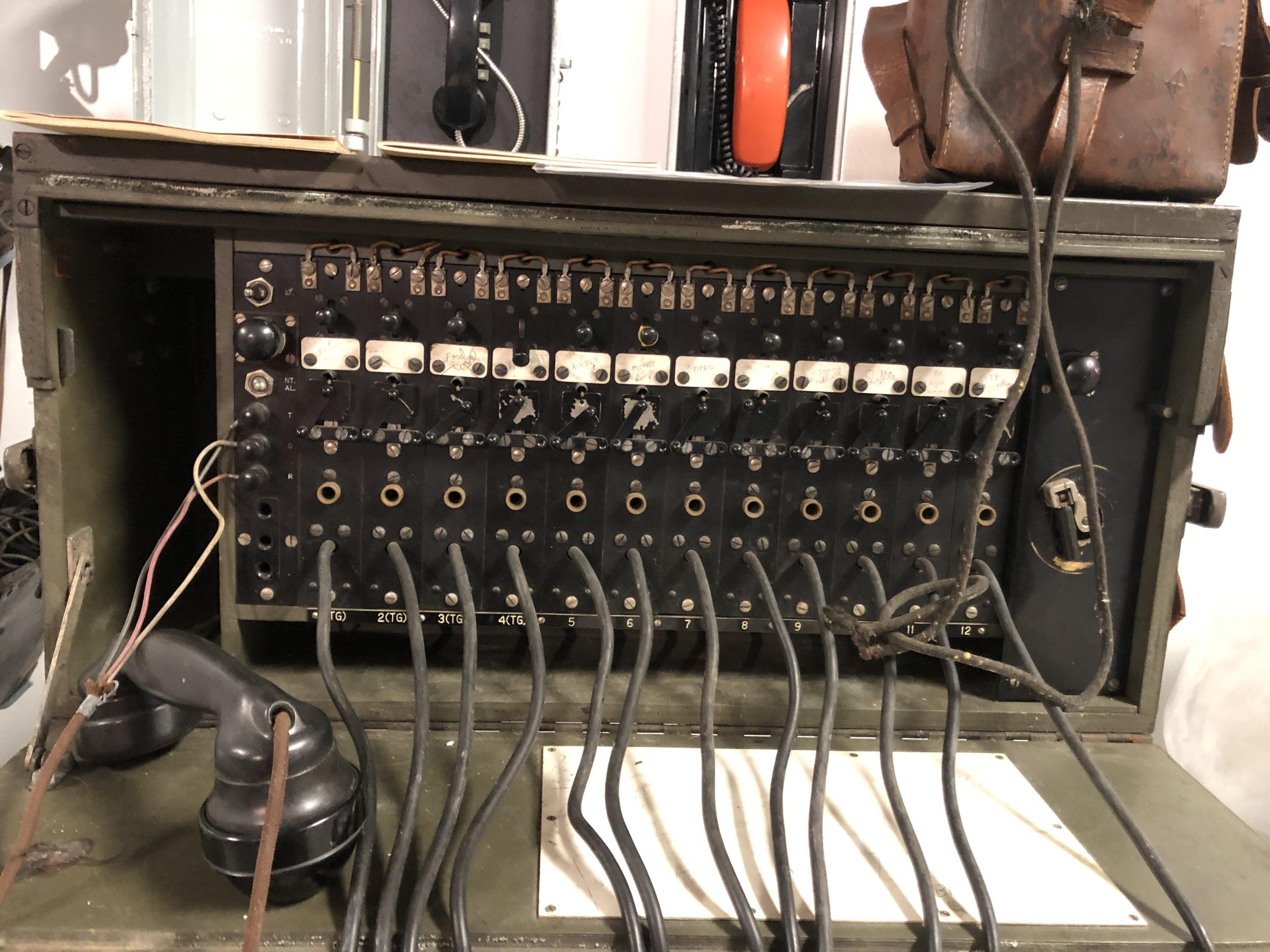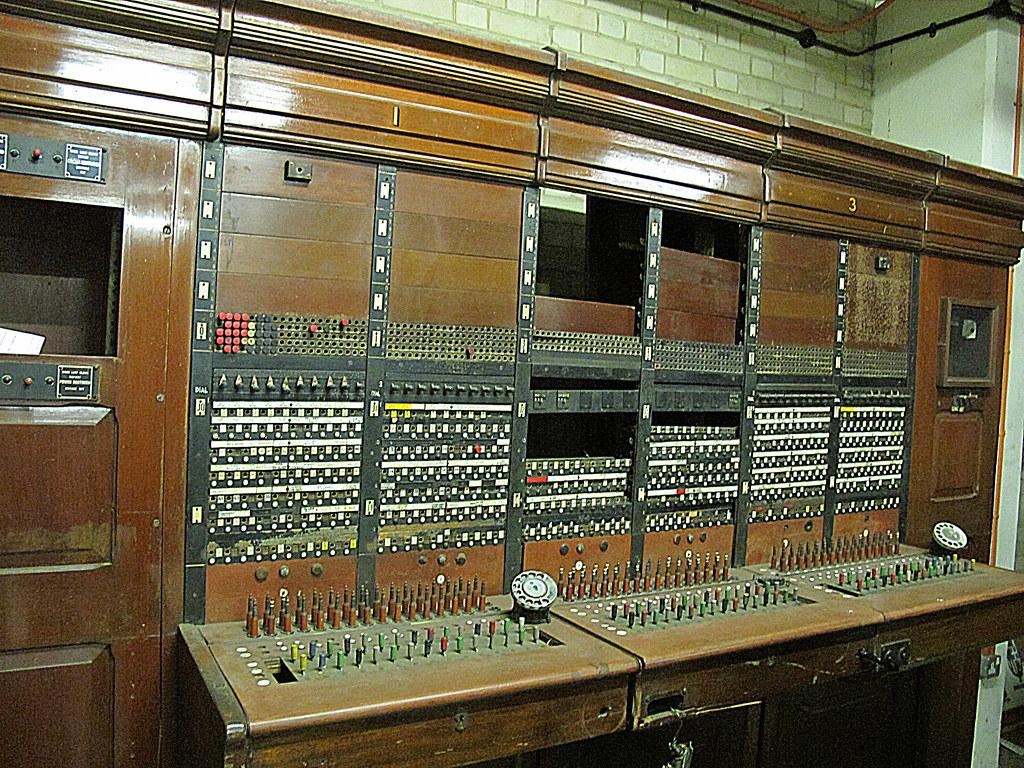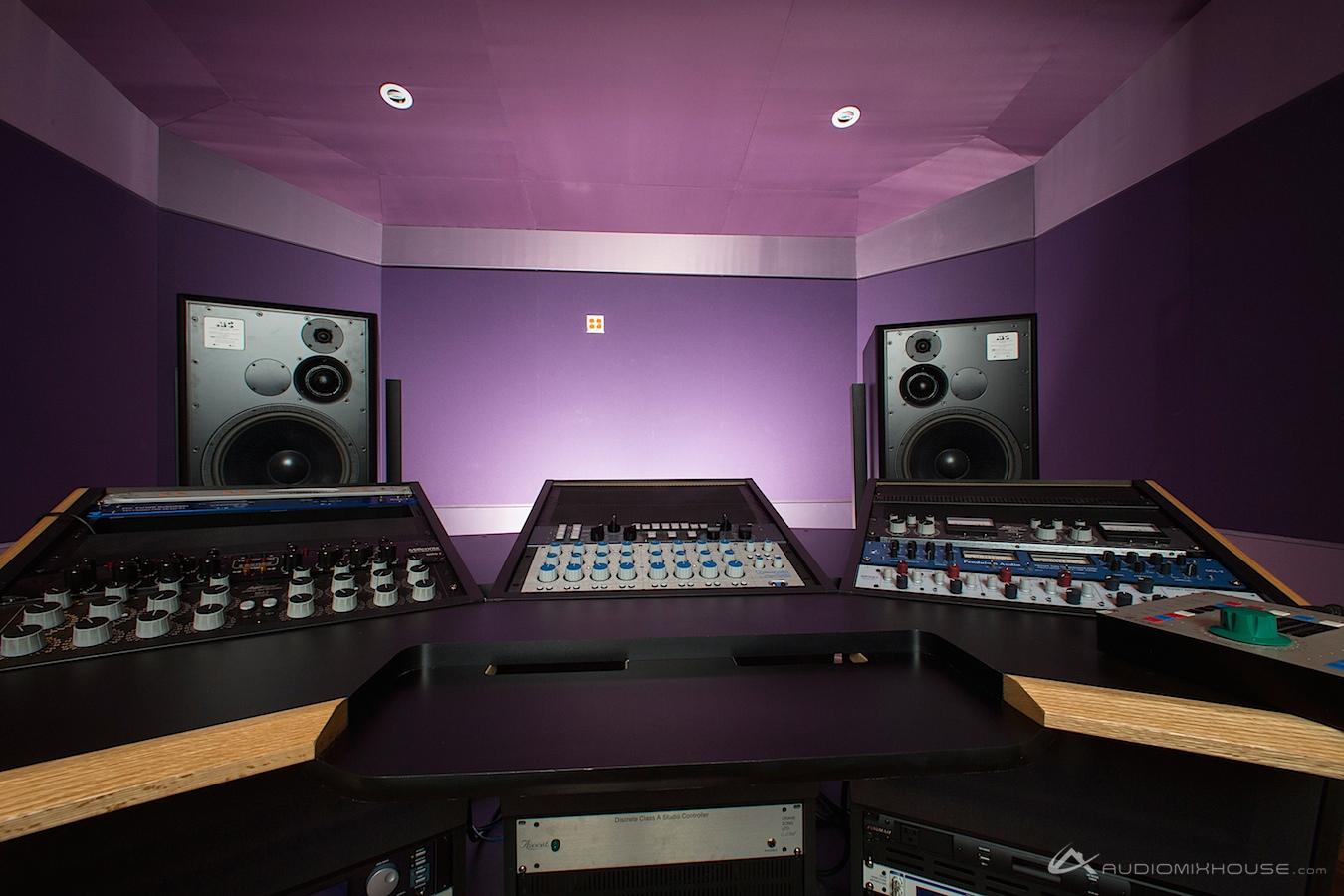
Originally posted 2024-01-19 07:16:39.
The switchboard, an essential communication tool used in various industries, has played a vital role in connecting callers to their intended recipients for decades. Whether you are new to working with switchboards or are seeking a refresher, this article aims to guide you through the fundamentals of using a switchboard effectively. From understanding the components to mastering call handling techniques, we will provide you with a comprehensive overview of how to utilize this indispensable device. So, if you’re ready to enhance your professional communication skills, let’s delve into the intricacies of how to use a switchboard seamlessly.
Understanding the Basics of a Switchboard
A switchboard is a central device used to connect phone calls within a building or organization. Understanding how to use a switchboard is essential for efficient communication and ensuring that calls are properly routed. In this post, we will take a closer look at the basics of a switchboard and provide step-by-step instructions on how to use one effectively.
-
Getting Familiar with the Switchboard Layout:
- A typical switchboard consists of a panel with multiple buttons or keys, each corresponding to a specific phone line or extension.
- Take a moment to familiarize yourself with the layout of the switchboard. Identify the buttons for incoming and outgoing calls, as well as any additional features or functions.
-
Receiving Incoming Calls:
- When an incoming call comes through, the corresponding button on the switchboard will light up or display a notification.
- To answer the call, press the button or lift the receiver connected to that line.
- Greet the caller politely and provide any necessary assistance or information. If the call is for someone else, politely transfer it to the appropriate extension.
-
Placing Outgoing Calls:
- To make an outgoing call, locate an available line by checking if any buttons are unlit or have a dial tone.
- Pick up the receiver or press the corresponding button for the desired line.
- Dial the phone number using the dial pad on the switchboard, or you can also use a separate telephone keypad if available.
- Wait for the call to connect, and then proceed with your conversation.
-
Transferring Calls:
- If a caller needs to speak with someone in a different department or extension, you can transfer the call.
- While on the call, press the “Transfer” or “Transfer Call” button on the switchboard.
- Enter the extension number or choose it from a list provided on the switchboard.
- Once you’ve entered the extension, press the “Transfer” button again to complete the transfer.
-
Additional Features and Functions:
- Some advanced switchboards may offer additional features like call forwarding, call hold, or conferencing.
- Familiarize yourself with the specific features available on your switchboard and consult the user manual or the system administrator for detailed instructions on how to use them.
- It’s important to follow any guidelines or protocols set by your organization regarding switchboard usage to ensure effective communication and deliver exceptional customer service.
Remember, practice makes perfect when it comes to using a switchboard. Don’t be afraid to ask for assistance or clarification if you encounter any difficulties. By understanding the basics and gaining experience, you’ll be able to handle calls with ease, ensuring smooth communication within your organization.

Switchboard Components and Functions: A Comprehensive Overview
Switchboard components and functions play a crucial role in the seamless operation of various electrical systems. Understanding how to use a switchboard is essential for anyone involved in electrical maintenance, installation, or troubleshooting. In this comprehensive overview, we will explore the different components and functions of a switchboard, providing you with valuable insights into their operation.
-
Main Switch: The main switch is the most important component of a switchboard. It allows you to cut off the power supply to the entire electrical installation or specific circuits during maintenance or emergencies. It is typically a large, prominently placed switch that can be easily accessed in times of need.
-
Circuit Breakers: Circuit breakers are designed to protect electrical circuits from overload or short circuits. They automatically interrupt the flow of electricity when a fault is detected, preventing damage to the electrical system and potential hazards. Modern switchboards often have individual circuit breakers for each circuit, making it easier to isolate specific areas for maintenance or repair.
-
Busbars: Busbars are conductive metal bars used to safely distribute electrical power within the switchboard. They connect the main switch and circuit breakers to ensure efficient power flow throughout the electrical system. Busbars are typically made of copper or aluminum and are carefully designed to handle the maximum load of current.
-
Meters and Indicators: Switchboards often feature meters and indicators to monitor various electrical parameters. These can include voltage, current, power factor, and energy consumption. Meters provide valuable information about the performance and efficiency of the electrical system, allowing operators to detect any abnormalities or malfunctions quickly.
-
Safety Features: Switchboards are equipped with various safety features to protect individuals and equipment. These commonly include door interlocks, which ensure that the switchboard can only be accessed when all the circuit breakers are in the OFF position. Additionally, switchboards are often designed with fire-resistant materials and equipped with arc fault detection devices to mitigate the risk of electrical fires.
To provide a clear understanding of how switchboards work, let’s take a look at a simple example:
Table 1: Example of a Residential Switchboard Components
| Component | Function |
|---|---|
| Main Switch | Cuts off power supply to the entire installation |
| Circuit Breakers | Protects circuits from overload or short circuits |
| Busbars | Distributes electrical power within the switchboard |
| Meters | Monitors various electrical parameters |
| Safety Features | Protects individuals and equipment from hazards |
Using this example, we can see how each component performs a specific function to ensure the safe and reliable operation of an electrical system. By familiarizing yourself with these components and their functions, you can confidently navigate switchboards and effectively manage electrical systems. Remember, proper training and adherence to safety protocols are essential for anyone working with switchboards or electrical systems.

Mastering the Art of Operating a Switchboard Efficiently
Operating a switchboard efficiently is a crucial skill for those working in reception or customer service roles. It requires quick thinking, excellent communication skills, and the ability to multitask effectively. Whether you are using a traditional phone switchboard or a modern digital system, can greatly enhance your productivity. In this post, we will explore some key tips and techniques to help you become a switchboard pro.
-
Familiarize Yourself with the Switchboard Layout:
Before you start handling calls, take some time to familiarize yourself with the switchboard layout. Learn the location and functions of each button, including call transfer, hold, and other special features. This will help you navigate the switchboard swiftly and avoid any unnecessary fumbling during calls. -
Develop Good Phone Etiquette:
Phone etiquette is a vital aspect of efficient switchboard operation. Answer calls promptly, using a friendly and professional tone. Introduce yourself and your organization clearly. Speak clearly and audibly, and always listen carefully to callers to ensure you understand their requests. Remember, a pleasant and professional demeanor goes a long way in creating a positive impression for your organization. -
Use Call Transfer and Hold Features Effectively:
The call transfer and hold features are your best friends when managing multiple calls simultaneously. Use them wisely to ensure smooth call flow. When transferring a call, inform the recipient about the caller’s identity or request to provide context. Utilize the hold feature cautiously, always checking in with the caller after a reasonable interval to avoid leaving them feeling abandoned. -
Keep a Log of Calls:
Maintaining a log of calls can be incredibly beneficial, especially during busy periods. Note down the caller’s name, organization, contact details, and a brief summary of their query or request. This log can serve as a valuable reference when following up with callers, ensuring efficient communication and seamless customer service. -
Continuous Training and Improvement:
Like any skill, operating a switchboard efficiently requires continuous training and improvement. Stay updated with new switchboard technologies and features. Attend workshops or online courses that focus on call handling skills and customer service. Regularly analyze your performance and seek feedback from supervisors or experienced colleagues to identify areas for improvement. By investing in your professional development, you will become a master of the switchboard in no time.
Operating a switchboard efficiently is an art that can be perfected with practice and the right mindset. From familiarizing yourself with the switchboard layout to developing good phone etiquette and utilizing the features effectively, each step contributes to a seamless and productive switchboard operation. With these tips in mind and a commitment to continuous improvement, you are well on your way to becoming a switchboard pro.
Tips for Troubleshooting and Maintaining a Switchboard
Using a switchboard can be a complex task, especially for those who are not familiar with its functionality. To help you effectively troubleshoot and maintain your switchboard, we have compiled some valuable tips:
1. Regularly clean and inspect the switchboard:
- Dust and debris can accumulate within the switchboard over time, leading to malfunctioning parts. Use a soft cloth to gently clean the surface of the switchboard regularly.
- Inspect the switchboard for any loose connections or signs of wear and tear. Tighten any loose nuts and bolts and replace damaged components promptly.
2. Familiarize yourself with the switchboard’s manual:
- Every switchboard comes with a manual that provides instructions on installation and troubleshooting. Keep the manual in a safe place and refer to it whenever you encounter any issues.
- If you have misplaced the manual, you can usually find it on the manufacturer’s website or contact their customer support for a digital copy.
3. Conduct routine maintenance:
- Performing routine maintenance on your switchboard can help prevent unexpected breakdowns. This may include checking the wiring connections, testing the circuit breakers, and inspecting the fuses.
- Create a maintenance schedule and follow it consistently to ensure smooth functioning of your switchboard.
4. Keep an eye out for warning signs:
- Be vigilant for any warning signs that may indicate a potential issue with your switchboard. These signs may include flickering lights, burning smells, unusual noises, or frequent tripping of circuit breakers.
- If you notice any of these warning signs, it is crucial to address the issue promptly to avoid further damage or potential electrical hazards. Consider contacting a professional electrician for assistance.
5. Have a backup plan:
- In case of a power outage or malfunction, having a backup plan can be a lifesaver. Install an uninterruptible power supply (UPS) to ensure that your critical appliances continue to function during a power failure.
- Regularly test the UPS to verify its effectiveness and replace the batteries as recommended by the manufacturer.
| Issue | Solution |
|---|---|
| Switchboard not powering on | Check the power supply and ensure it is connected properly. If the issue persists, contact an electrician. |
| Switchboard circuit breakers tripping frequently | Identify the appliances causing the overload, redistribute the load, or consider upgrading the circuit breakers. |
| Switchboard emitting sparks | Switch off the power immediately and contact an electrician for repair. Do not attempt to fix it yourself. |

Enhancing Switchboard Security: Best Practices and Precautions
The proper setup and use of a switchboard is essential for ensuring the security of your telecommunications infrastructure. By implementing best practices and taking necessary precautions, you can enhance switchboard security and protect sensitive information from unauthorized access. In this post, we will explore some key tips and recommendations on how to use a switchboard securely.
-
Set up strong access controls:
Implementing strong access controls is crucial to prevent unauthorized users from tampering with the switchboard. Consider using complex passwords and regularly updating them. Enable two-factor authentication whenever possible to add an extra layer of security. -
Regularly update and patch your switchboard software:
Keeping your switchboard software up to date is critical in preventing security vulnerabilities. Regularly check for updates and patches, and apply them promptly. This helps protect your switchboard from potential exploits that could compromise its security. -
Limit user privileges and permissions:
Granting user privileges and permissions judiciously is key to reducing the risk of unauthorized access. Only provide necessary access levels to staff members, ensuring that each user has appropriate restrictions based on their roles and responsibilities. -
Conduct regular security audits:
Performing regular security audits helps identify any potential weaknesses or vulnerabilities in your switchboard system. These audits enable you to ensure that all security measures are up to date and functioning correctly. Engage with professional cybersecurity experts to conduct thorough inspections and address any security gaps. -
Encrypted communication protocols:
Implementing encrypted communication protocols such as Secure Sockets Layer (SSL) or Transport Layer Security (TLS) is crucial for protecting data transmitted through your switchboard. Encryption scrambles the information exchanged, making it difficult for unauthorized individuals to intercept and decipher the data.
In addition to these best practices, it is crucial to stay informed about the latest security threats and trends in switchboard security. Regularly educating yourself and your staff members on potential risks and appropriate countermeasures can help maintain a secure switchboard environment. By following these recommendations, you can enhance switchboard security and minimize the potential risks associated with unauthorized access or data breaches.
Q&A
Q: What is a switchboard?
A: A switchboard refers to a device used to connect multiple phone lines within an organization, enabling callers to reach the desired recipient by routing calls through different extensions or departments.
Q: What are the different types of switchboard systems?
A: There are primarily two types of switchboard systems: manual and automatic. Manual switchboards require a live operator to physically connect calls, while automatic switchboards use computerized technology to route calls without human intervention.
Q: How does a manual switchboard work?
A: In a manual switchboard system, a trained operator receives incoming calls and connects them by plugging and unplugging phone cords into the appropriate jacks. The operator relies on visual indicators or alphabetical directories to identify the extension or department to which the call needs to be connected.
Q: What are the advantages of using a manual switchboard?
A: Manual switchboards allow for more personalized service as operators can provide information, take messages, and handle complex call routing requests. Additionally, in case of power outages or technical issues, manual switchboards continue to function as operators can still connect calls manually.
Q: What are the drawbacks of using a manual switchboard?
A: Manual switchboards typically require a larger workforce and more training for operators. They are also slower than their automated counterparts, leading to potentially longer wait times for callers. Moreover, errors during manual connection may occasionally occur, resulting in misrouted calls.
Q: How does an automatic switchboard work?
A: An automatic switchboard operates by using computerized technology, such as PBX (Private Branch Exchange) systems. Callers are usually greeted by an automated voice prompt, and through keypad selections or voice recognition, they can navigate to the desired extension or department.
Q: What are the advantages of using an automatic switchboard?
A: Automatic switchboards offer quicker call routing and reduced waiting times compared to manual systems. They require fewer operators, which can translate to cost savings for organizations. Moreover, automated switchboards can integrate various features like call forwarding, voicemail, and call recording.
Q: Are there any disadvantages to using an automatic switchboard?
A: While automatic switchboards are efficient, they lack the personal touch of live operators. Complex calls or individuals requiring specific attention may find automated systems less satisfactory. Additionally, technological glitches or power outages could hinder the functioning of an automatic switchboard.
Q: How can I use a switchboard effectively?
A: To use a switchboard effectively, ensure familiarity with the system’s functions and features. For manual systems, learn the visual indicators or alphabetical directories to assist callers efficiently. In the case of automated systems, follow the voice prompts and input the appropriate extension or department to reach your desired recipient.
Q: What should I consider when choosing a switchboard system?
A: When selecting a switchboard system, consider factors such as the size of your organization, call volumes, desired features, budget constraints, and the level of personalization required. Assessing these elements will help determine whether a manual or automatic switchboard system is best suited for your needs.
Q: Are there any alternatives to traditional switchboard systems?
A: Yes, modern phone systems increasingly offer virtual switchboards or cloud-based solutions. These alternatives eliminate the need for physical equipment, allowing organizations to handle calls remotely through sophisticated software. Virtual switchboards offer flexibility, scalability, and can integrate with various communication channels. In conclusion, understanding how to use a switchboard can greatly enhance one’s ability to efficiently manage incoming and outgoing calls. By familiarizing oneself with the layout and functions of a switchboard, individuals can confidently navigate through the various features and effectively handle communication within an organization.
Remember to always greet callers professionally, collect relevant information, and direct calls promptly to the appropriate personnel or department. Utilizing features like call forwarding, hold, and transferring capabilities allows for seamless call management and ensures callers receive prompt assistance.
Furthermore, proper maintenance and organization of the switchboard equipment are essential for optimal functionality. Regularly checking and testing the system, keeping track of any updates or upgrades, and labeling extensions can help streamline operations and minimize downtime.
While the concept of switchboards may seem complex, mastering their usage not only enhances professional communication but also contributes to a smooth workflow. By prioritizing efficiency, professionalism, and organization, individuals can confidently harness the power of switchboards, promoting effective communication and fostering positive relationships within their organization.





